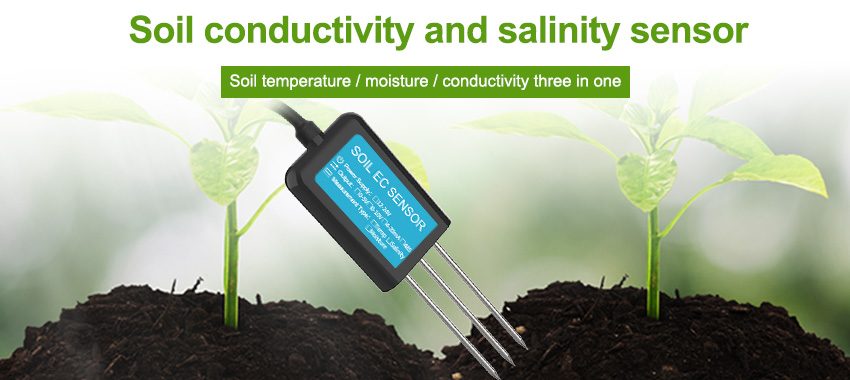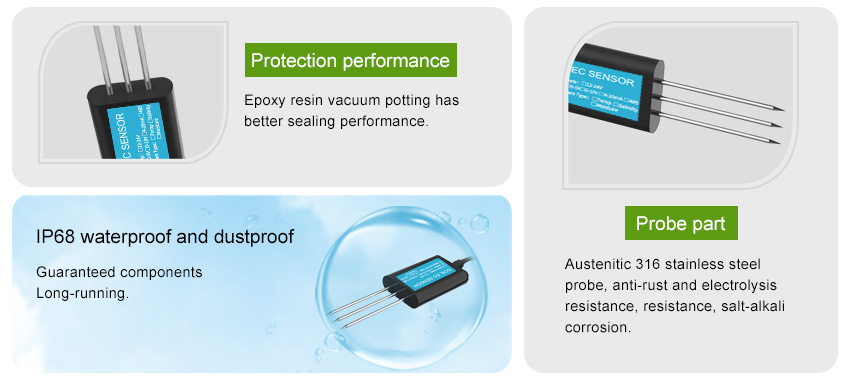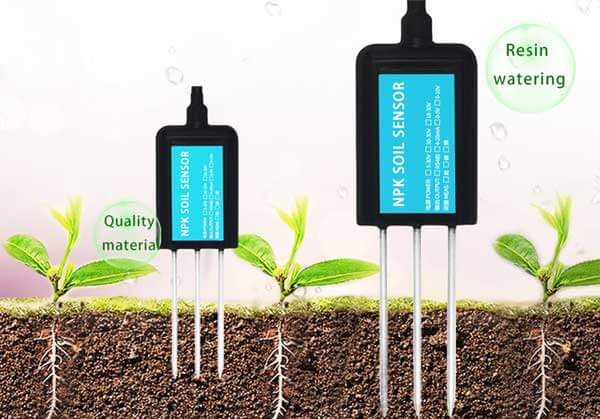Agriculture is the backbone of our global food production system. With a rapidly growing population and increasing demand for sustenance, it becomes imperative to enhance crop management practices. In recent years, soil sensor technology has emerged as a revolutionary tool in transforming agriculture by providing precise insights into soil conditions. This article explores the impact of soil sensor technology on crop management, including its benefits, applications, and challenges.

I. Understanding Soil Sensors (300 words): Soil sensors are innovative devices designed to measure and analyze key soil parameters such as moisture content, temperature, pH levels, and nutrient concentrations. They provide real-time data to farmers and agronomists, enabling them to make informed decisions regarding irrigation, fertilization, and other essential agricultural practices. The sensors are usually embedded in the soil at various depths, collecting data at frequent intervals.
II. Benefits of Soil Sensor Technology (400 words):
- Precision Agriculture: Soil sensors allow for precision agriculture practices, optimizing resource usage while minimizing waste. By delivering accurate information about soil conditions, farmers can tailor irrigation and fertilization strategies specific to each crop’s needs.
- Increasing Crop Yields: With precise data on moisture levels and nutrient content, farmers can ensure optimal growing conditions for crops. This leads to increased crop yields and improved quality, enhancing overall productivity.
- Water Conservation: Soil sensors enable efficient water management by eliminating guesswork. By knowing the exact moisture levels in the soil, farmers can apply water only when necessary, reducing water consumption and minimizing the risk of over-irrigation.
- Nutrient Management: Soil sensors aid in efficient nutrient management, ensuring that crops receive the right balance of essential elements. By monitoring nutrient levels in real-time, farmers can adjust fertilization practices accordingly, minimizing nutrient runoff and environmental pollution.
- Early Detection of Soil Issues: Soil sensors can detect soil issues such as salinity, compaction, and nutrient deficiencies early on. Prompt identification allows farmers to take preventive measures, such as soil amendments or targeted interventions, to mitigate potential crop damage.
III. Applications of Soil Sensor Technology (500 words):
- Irrigation Management: Soil sensors play a crucial role in optimizing irrigation practices. By measuring soil moisture levels, farmers can determine when and how much water to apply, preventing both water stress and waterlogging.
- Fertilizer Management: Soil sensors provide accurate information about soil nutrient levels, allowing farmers to tailor fertilizer applications based on crop requirements. This improves nutrient-use efficiency and reduces the risk of nutrient leaching.
- Crop Phenotyping: Soil sensors aid in crop phenotyping, helping farmers understand plant responses to environmental conditions. By monitoring factors like temperature, moisture, and root development, farmers can assess crop performance and make informed decisions for crop improvement.
- Disease and Pest Management: Changes in soil conditions can influence the prevalence of diseases and pests. Soil sensors help monitor conditions that favor certain diseases or pests, enabling timely interventions and preventing crop losses.
- Research and Development: Soil sensor technology is instrumental in research and development activities related to soil health, nutrient cycling, and agroecosystem sustainability. Researchers can collect precise data from different locations and analyze the impact of various management practices on soil health.
IV. Challenges and Future Directions (350 words): Despite the numerous benefits offered by soil sensor technology, there are challenges to widespread adoption and implementation. These include the initial investment cost, data interpretation complexity, and technical constraints associated with sensor placement and maintenance. Additionally, integrating soil sensor data with other agricultural technologies for seamless decision-making remains a challenge.

However, advancements in technology, including wireless connectivity, miniaturization, and data analytics, are addressing some of these challenges. The future of soil sensor technology lies in developing affordable, user-friendly devices that can seamlessly integrate with existing farming systems. This will enable farmers of all scales to harness the power of soil sensors for enhanced management practices.
Conclusion (200 words): Soil sensor technology is revolutionizing agriculture by providing precise, real-time data on soil conditions. This empowers farmers to make informed decisions regarding irrigation, fertilization, and overall crop management. The benefits of soil sensor technology include precision agriculture, increased crop yields, water conservation, and efficient nutrient management. Applications span from irrigation and fertilizer management to disease and pest control, as well as scientific research.
While challenges exist, ongoing advancements in technology are addressing many of these obstacles. The future of soil sensor technology holds promise in terms of affordability, user-friendliness, and seamless integration with existing agricultural systems. As we strive to meet the increasing demands of a growing population, soil sensor technology will continue to play a pivotal role in revolutionizing agriculture and promoting sustainable, efficient crop management practices.
